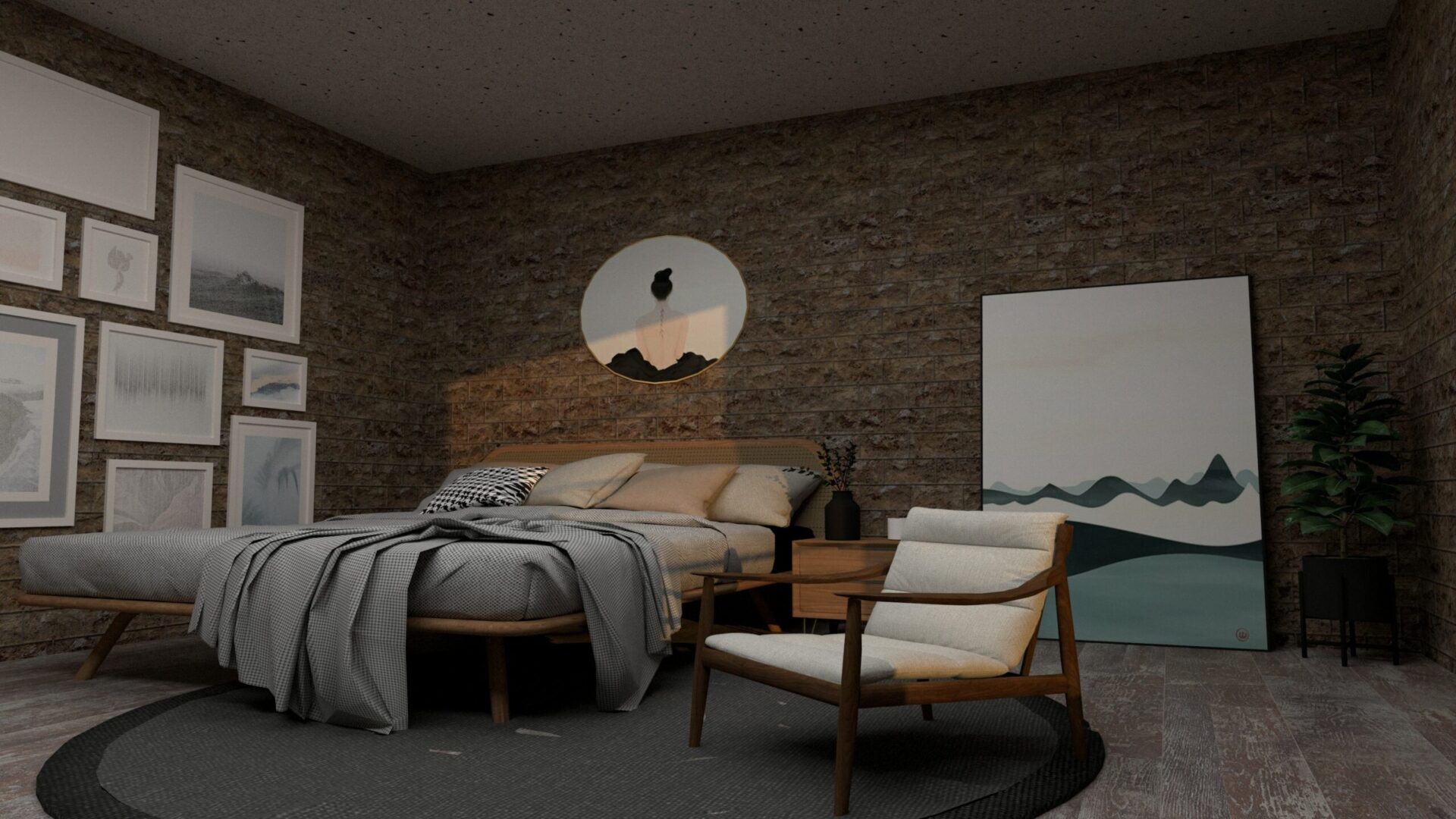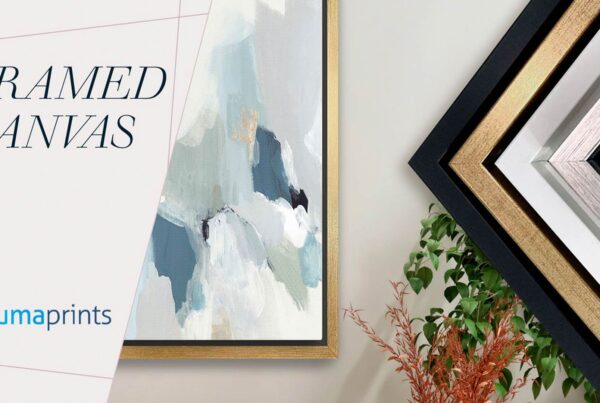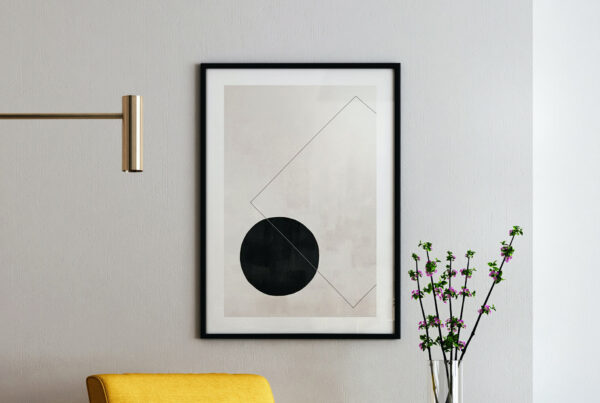If we’re talking about art prints as wall decor, our minds go straight to the classic: framed prints. They’re a classic way to display your favorite artwork, and they come in all shapes and sizes. But what about the opposite end of the spectrum? The world of framed prints is so vast that sometimes it’s easy to forget that there are other options out there. Why not try something different and consider framing your print in a different way: without frames! Frameless prints add style to your space without taking away from the artwork. So which one is best for you?
Luckily, you don’t have to worry about it. It is confusing, but with the right choices, you can finally hang that artwork or photo of your family without fear of judgment. With a material choice in mind, here are some pros and cons of choosing to frame or not to frame your print.
Navigating The Materials Maze
There are several materials to choose from for a print. A print can be on canvas, fine art paper, metal, or peel-and-stick prints. Choose whichever fits your style.
Even with suitable materials for the job, you still need to provide high-quality images to make the print much better.
1. Metal
It is one of the sturdier options on the list. Metal prints use aluminum sheets with a polymer coating to make the print last longer. It boasts vivid colors while being durable because of the whole printing process. Often, the image is baked on the polymer coat directly, making their colors pop and durable.
Using photos with 300+ dpi is a must to make the colors pop and vibrant. DPI is a measure of how sharp your image is. The higher the number, the higher the quality of the photo.
Although printing on metal ensures vibrant colors and great-quality prints, the dyeing process is vulnerable to sunlight. This puts metal prints as indoor exclusive or in places where sunlight is limited.
Metal prints also require little maintenance due to them being metal. Aluminum is not like iron or steel, which rusts due to humidity. If the piece is in a humid environment like a bathroom, a simple wipe can bring back the vibrancy of color on the print.
Dust and grime are also easy to deal with on metal prints, making maintenance easy while preserving image quality.
Recommended reading: What is a Metal Print?
2. Canvas
Canvas is the material of choice by painters of the Renaissance and later. This is the chosen support, or the surface you paint on, by many artists because of its sturdiness. Art and canvas have a long history together, but modern canvases can be acid-free. This means your print will stay on the canvas for a long time.
But even with an acid-free canvas, humidity is still a big problem for canvas prints. Canvases tend to swell and contract based on relative humidity. This damages the canvas print in the long run and further contributes to its aging process.
Light can also damage the image quality of prints on canvas. Prolonged exposure to sunlight can quickly fade your print to nothingness.
A location with a relative humidity of 20% and controlled lighting is ideal for canvas prints.
Learn more about canvas prints here.
3. Fine Art Paper
Fine art paper can be described as very high-quality paper. They are very neutral in color and should make your pictures pop. It often comes in varieties, each with very slight differences in GSM or grams per square meter. The higher the GSM number, the higher the quality of the paper.
The variants vary from glossy photo paper to matte-finish paper. These options ensure that the correct paper type is used for the job. For example, matte papers are for black and white or vintage-looking photos and artwork. It gives a certain roughness to the piece rather than using glossy paper.
Glossy paper, on the other hand, is best suited for photos or artwork with vibrant colors. This brings out the depth and contrasts between colors.
But with fine art paper, you’d still encounter problems that come from regular, everyday-use paper. Most modern papers are acid-free. It won’t turn yellow that fast compared to paper with acid.
Lignin is your main enemy on fine art paper. It is tree sap that makes its way to paper during its production process. Any amount of it can contribute to the yellowing of your artwork.
Paper is also very vulnerable to light damage. In metal prints, only the colors fade due to light. On fine art paper, the entire paper is affected. Good quality paper can withstand considerable light damage but would still be affected by prolonged exposure.
Related: Canvas or Paper Print?
4. Peel and Stick Prints
Peel and stick prints are a great way to add some personality to your room. The carefully crafted prints are detailed, one-of-a-kind works of art with brilliant colors. The peel-and-stick prints are also convenient. Peel the backing off your poster and stick it instead of using nails, tape, costly frames, or damaging your walls!
Peel and Stick prints are simple to hang and look fabulous in any space. They are wall posters with an adhesive backing that may be mounted directly to a wide range of surfaces. These prints look fantastic on different walls, doors, windows, glass, children’s rooms, and other spots.
After peeling off the backing, the peel-and-stick prints may be swiftly and easily placed on any flat surface. Stick the print to the wall once the top of the backing has been removed. Then, pull off the rest of the backing, smooth down the print, and enjoy the memories without worrying about damaging your walls due to holes.
To Frame or Not To Frame, That is The Question
With the pros and cons of each material out of the way, let us answer the most important question; to frame or not to frame?
1. Metal
Framing a metal print piece should only be done when you want the piece to stand out. One option is an inset frame. It puts the print 34 of an inch away from the wall. Not only does it stand out when in a living room or an office, but it also gives the print a pop-out feel because of the depth it provides.
Using a regular wood frame can also be beneficial to the print. It pops out the print when hung in neutral colors like white or beige. Wood also gives off a warm and cozy vibe that your guests would surely love.
However, hanging a metal print is a great way to project modernity in a household. A bare metal print will look good on a dark-colored wall. The contrast between the print and the wall will blend the looks, making it feel like the print is part of the wall itself.
2. Canvas
Picking canvas has its problems because of the mentioned difficulties of canvas with humidity. Framing the piece is an excellent way of preserving the color and protecting the canvas. It also gives off a more traditional feel.
Choosing the color of the frame depends on the interior of your home or office. The right color will make the print stand out while protecting it from the elements.
Floating frames are also a great option to give your print a modern feel. It puts the front of the print on view. Floating frames help distinguish the image from its environment. The only downside is the added maintenance.
Due to it not having a glass cover, additional wear and tear might happen. Proper maintenance is still a big must-do to preserve the canvas and print.
3. Fine Art Paper
Fine art paper prints are susceptible to the same problems as regular, everyday-use paper. Framing fine art prints is a definite must. Not only are you protecting the print and paper, but you are also preserving the colors of your print. Making them last longer than not framing them
Even though modern fine art paper is acid-free, it is still susceptible to yellowing from low-quality mat backing. Using an acid-free mat is a must as well. The mat is where the print will rest while in a frame. A good mat will protect the print by being acid-free to prevent yellowing.
Framing with special glass blocking UV rays can help preserve the paper and make it last longer than regular glass. Proper maintenance of the frame is also a must to prevent grime buildup that may potentially damage your print.
4. Peel and Stick Prints
This peel-and-stick print is simple to use! You only need to peel aside the backing to reveal a thin, removable, wall-safe adhesive. No framing is necessary. It can stand out on its own. You don’t need to worry about how to hang your gorgeous prints because you can paste them anyplace you like! It spared you the hassle while still providing you with a delightful design!
Your peel-and-stick prints will be beautiful for many years to come. Use a dry cloth to dust them, and avoid hanging them in direct sunlight. Avoid misting any liquid on the surface. When necessary, wipe down surfaces with a soft, lightly damp cloth.
To Top it All Off…
Displaying your favorite memories shouldn’t have to be a chore. However, it is essential to know the weaknesses and strengths of various materials and the associated pros and cons of framing them. This is to save money and add some color to your life.
Most, if not all, decision-making is done by choice of material. Choosing the right material option can help you save money while having a beautifully made print. Framing is based on the material and what vibe you want the piece to project.
A canvas print with a wooden frame and glass front conveys very traditional and warm vibes. A floating frame canvas brings modernity and highlights the print in an interior space.
Framing is also an essential part of preserving your print. As mentioned earlier, all forms of prints are susceptible to light damage. The only difference is how much it affects the print and its colors.
For example, metal prints are vulnerable to light because it quickens how much the colors fade. So, picking the environment where to place your print and how you want it to look is also essential in maintaining your print.
But with the very long list of material choices aside, a great print will bring personality to wherever you choose to display it.
Be smart and creative with your prints. Not only does it fill an empty space on any wall, but it can also be a conversation piece, as well as a source of inspiration.
Recommended reading: Mounting Techniques for Prints





